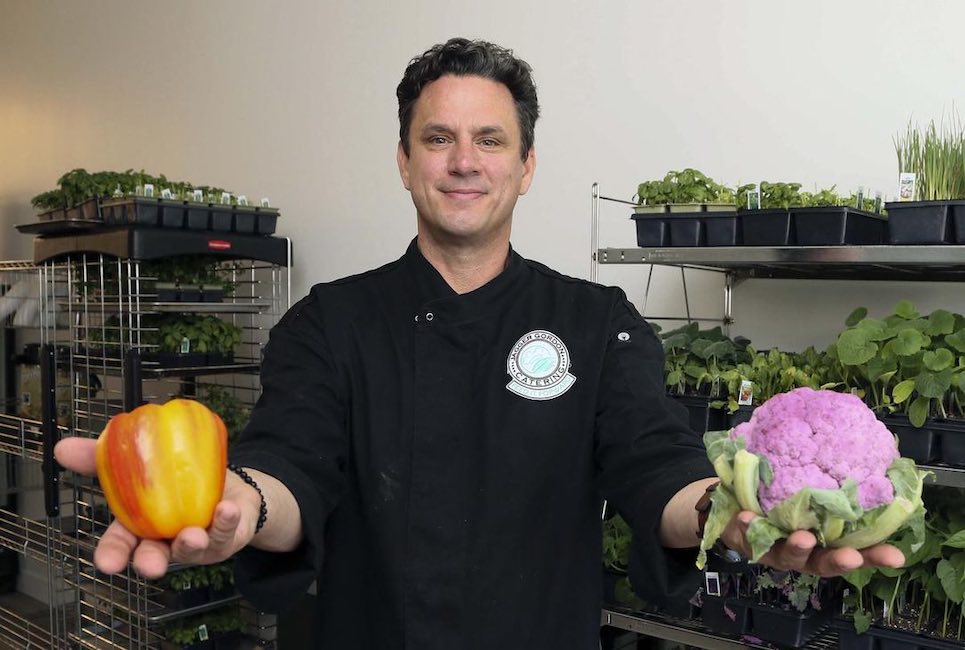How happy are you with your email newsletter?
I recently surveyed a group of ethical business owners, and this was the first question.
To my surprise, not a single respondent gave their newsletter a 10 out of 10.
The best rating was a 7, and the overall result averaged at 5.
Let me be brutally honest: that’s not the way we’ll win the fight against the climate crisis, change shopping behaviour, make the new economy flourish, or achieve the Sustainable Development Goals.
No!
If we want to make an impact, we need to send emails that we’re proud of.
Because here’s the thing:
- Half the global population uses email, and that number is growing every year. There’s no better way to reach so many people at so little cost.
- Just by sending great emails, you can make a difference in people’s lives — and grow your audience without spending big bucks on ads. (Listen to the Change Creator podcast episode with Sam Parr for a great example.)
- Email lets you segment and personalise each reader’s journey to sustainability and adopting your products at scale — in a way that no other marketing tool can.
In this article, I’ll focus on that journey.
You’ll learn how your business can…
- send emails that add value and engage your readers,
- set up the sale in a way that resonates with conscious consumers, and
- convert more people to a more sustainable way of life.

Why Should You Be Careful With Discount Codes in Your Emails?
Ever heard of “customer journey mapping”?
In copywriting, we like to map people’s journey along Eugene Schwartz’ Stages of Awareness:
- Unaware: This person has never heard of you, your product, or the problem you solve.
- Problem Aware: They sense they have a problem and may even be searching for a solution — but they haven’t found it yet. (Or they sense a desire but they’re not sure how to get there.)
- Solution Aware: They know what result they want to achieve, but they have no idea that your product/service can help them.
- Product Aware: They know what you sell, but they’re not sure it’s right for them.
- Most Aware: They know your product and that it’s perfect for them. Given the right deal, they’re ready to buy!
Emails are so powerful because with a bit of segmentation, you can help each reader along their journey:
Someone might be searching for a solution for their problem, find your website and sign up for your emails because you promise to help them with their problem. Over time, they discover how your product or service can solve their problem. They get to know your offer, and eventually they’ll be convinced that it’s perfect for them. Then, in that fateful email, you offer them a discount code — and the deal is closed.
However, let’s say someone finds your website and you offer them a discount code right from the start. A number of things might happen:
Scenario A
They’re already a fan of your product (most aware), so they’re delighted about the special offer. They sign up to your newsletter just for the code and place their order straightaway. Congratulations! You now have a new subscriber who’s hungry for more discount codes and trained to expect them.
Scenario B
They’re product aware. Depending on the cost of your products, they might just go ahead and sign up for that discount code. (After all, if the product’s not right for them, they’ll be able to return it.) Congratulations! You now have a new subscriber, and if your product has to be experienced to be believed, you also have a real chance of winning a new customer.
Scenario C
They’re unaware, problem aware or solution aware. In other words: not ready to buy from you. They may sign up to get the discount code, but it’s likely to sit in their inbox unused until it expires.
In summary, discount codes can train people to expect lower prices, place orders with the plan of returning the item, or fail to resonate altogether.
Those are just the reasons why ANY business should beware of overusing discount codes.

I’m writing this for Change Creator, so I’m guessing you care about the next point too:
For Change Creator Businesses, the Customer Journey is Intertwined with the Sustainability Journey
Those 5 stages of awareness Eugene Schwartz described describe a learning process that can apply to many things — from sales to changing our way of life.
And they’re particularly applicable to people’s journey into a more sustainable lifestyle:
- Unaware: This person has never heard of a particular issue. Imagine yourself before seeing the picture of a seahorse clutching a Q-tip, for example. Or think back to the time before the #metoo movement.
- Problem Aware: They sense they have a problem and may even be searching for a solution — but they haven’t found it yet. (Or they sense a desire but they’re not sure how to get there.) For example, they’d like to reduce the amount of waste they produce, but they have no idea how to get there.
- Solution Aware: Staying with the waste example, they know the term “zero waste”, and they’re already engaged in the community. But they have no idea that your product or service can help them reduce their waste even more.
- Product Aware: They know that you sell solid shampoo, but they’re not sure it’s right for them.
- Most Aware: They know your shampoo and that it’s perfect for them. Given the right deal, they’re ready to buy!
Looking at the journey in this way, it’s easy to see that a marketing strategy that relies on discounts only works with die-hard conscious consumers who already love your offer.
There are 3 problems with that:
- Many change creator brands are still small or don’t even plan to grow into corporations. Meaning, there’s only a tiny number of people you’ll reach with that approach.
- Die-hard conscious consumers make very considered purchases. While that means they’re less likely to be swayed by a discount, once they’ve fallen in love with you, they’re more likely to stay loyal — and buy at full price.
- You’re limiting your impact by excluding the vast majority of people — instead of helping them take the next step.

Which brings me to the big question:
What If Brands Took Responsibility for Changing Buying Behaviour… Instead of Just Taking Advantage of It?
If we all worked together to make people’s journey into a future-proof way of life more accessible, we could turn conscious consumerism from a niche phenomenon into a mass movement.
Here are three practical ways your brand can help us create that movement:
- Offer at least one lead magnet that’s not directly related to selling your product
For example, you could offer a guide that tells people how to use your product category (“How to Get Started with Solid Shampoo” — a great match for product-aware folks). Or you could build a calculator that helps them find out how much positive impact they could make with your offer (“How many times per week do you wash your hair? We’ll tell you how much plastic you could save with solid shampoo every year!” — a strong entry point for solution-aware readers.) - Segment your emails according to people’s current position on their journey
To find out where they are on their journey, you could offer a fun quiz, tag people based on the lead magnet they’ve downloaded, or simply ask a segmentation question in the first email.
For example, in my first email to new subscribers, I offer different kinds of content to find out about their needs. - Practice customer empathy by designing email sequences that will help each segment take the next step
The easiest way to get started with this is by listening to your ideal customers. Buy people coffee and ask them about their way into becoming a conscious shopper. Hang out in Facebook groups and pay attention to people’s stories. Then use that insight to write emails that are related to what you’re selling — but not about the sale:
- Write honestly about something that happened to you and find a way to link it to your product. A bit of educational storytelling goes a long way in adding value!
- Share a piece of insider knowledge that you’ve gained “on the job” (legally). Your readers will feel like they’re part of an exclusive group, and they’ll want to show off their new insights — helping your story to touch more people’s lives, with no extra effort on your part.
- What changes are happening in your industry that you can share with your readers? Everyone wants to be ahead of the game. Be the brand that allows your readers to feel special.
- Share something that will create an aha! moment for your readers. Those lightbulb moments will speed them up as they fall in love with your offer and adopt a new way of life.
- Share a collection of articles, videos and other content that inspired you this month. Not everything in your emails needs to be written by your brand. Just make sure you add that personal touch by explaining why you chose this collection. This will build your “know, like, and trust factor” — a crucial element in moving people through those stages of awareness.
Over to You
I’d love to know which of these ideas you’ll try out first. Let me know in the comments!

















